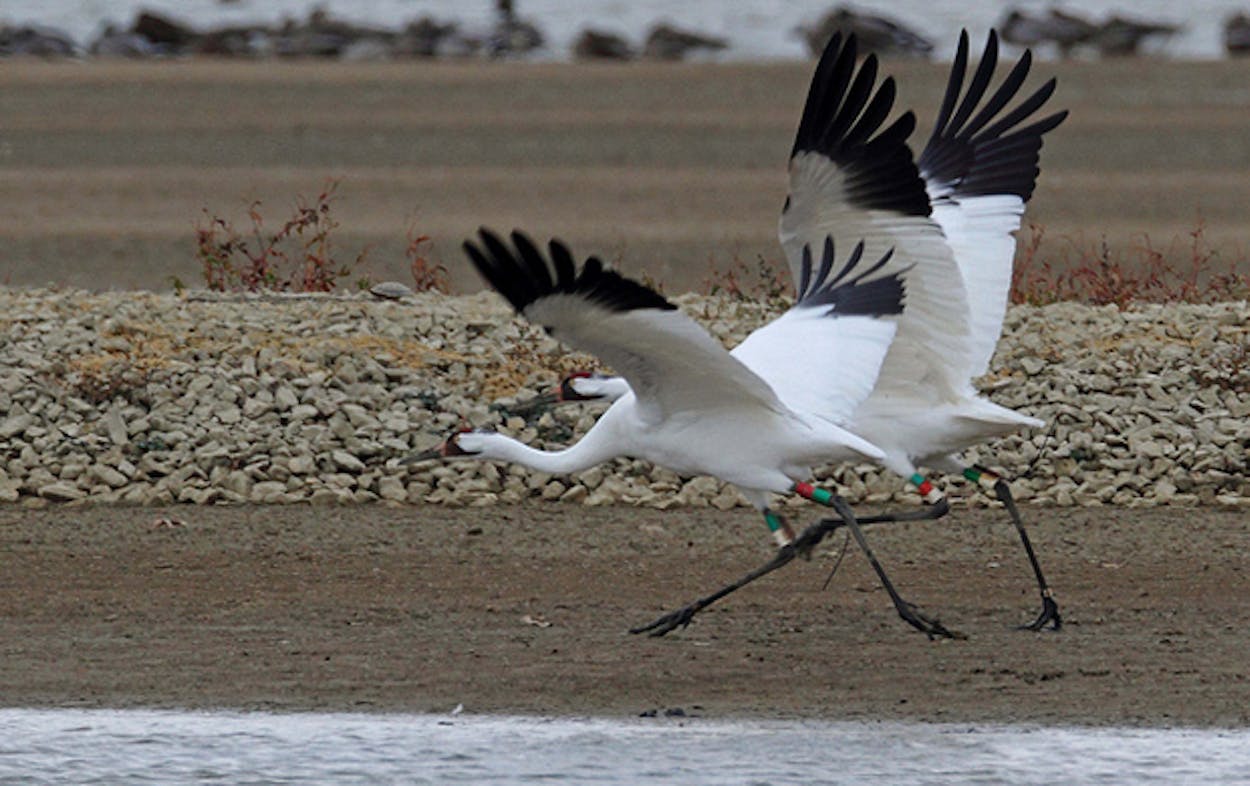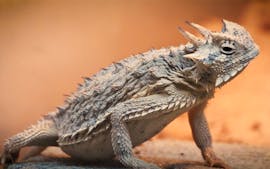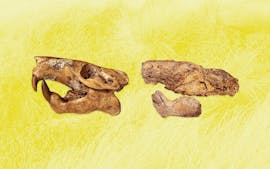The endangered whooping crane is at the center of a water rights lawsuit unfolding in a federal courtroom in Corpus Christi.
The trial, which began Monday, pits environmentalists against water regulators and business interests. “Environmentalists sued water regulators on claims they let industrial facilities, farms and cities suck the river so dry that not enough fresh water reaches the coastline. Their suit seeks a court-ordered plan to rebalance upstream and downstream usage regardless of pre-existing water contracts,” wrote Bloomberg’s Laurel Calkins.
The last remaining flock of wild whooping cranes winter in the Aransas National Wildlife Refuge at the edge of the San Antonio Bay. The Aransas Project, acting as lawyers for the stately birds, argues that by not allowing sufficient fresh water to flow to the bay, the Texas Commission on Environmental Quality violated the Endangered Species Act. As a result, the bay became too salty, and the effects rippled up the food chain, causing the deaths of 23 whooping cranes in the winter of 2008, the Aransas Project holds.
The stakes are high, and not just for the cranes. “The outcome of the case could change the way Texas balances the rights of water users with the health of the environment, or it could affirm the water permitting process already in place under state law,” Mark Collette wrote in the Corpus Christi Caller-Times. Water regulators argue that upstream users also need water from the drought-starved river. “If the whooping cranes win, it will cut the water supply by 50 percent,” William West, general manager of the Guadalupe-Blanco River Authority, told Bloomberg.
U.S. District Judge Janis Graham Jack, who described herself as an avid birder, wondered how to balance the competing interests in this case: “In a drought, do you take from the farmers to give to the whooping cranes?” Jack asked, according to Collette.
{media number=1 align=left}{/media}While some 1400 whooping cranes existed in the late 1800s, by 1939 the birds were pushed to the brink of extinction with only eighteen left to repopulate the species, according to the Texas Department of Parks and Wildlife. Whooping cranes were listed as endangered in 1970 and steadfast conservation efforts—including captive breeding projects that use whooping crane puppets to rear birds—have brought their numbers back from the edge of extinction. Today around three hundred whooping cranes remain in the wild and a full 283 of them are members of the Aransas flock.
But the plaintiffs must prove to Judge Jack that increased salinity killed the 23 birds (there aren’t remains of nineteen of the missing birds). “I just want to make sure they (the missing cranes) didn’t go to New Mexico — or to Antigua for the holidays,” the judge quipped, according to the Caller-Times.
The San Antonio Express-News dispatched environment reporter Colin McDonald to Corpus to cover the trial. McDonald reported that in the first day of proceedings, Judge Jack pushed for Tom Stehn, a crane expert and retired employee of the U.S. Fish and Wildlife Service, to testify. (Typically, the federal government bars federal employees to testify in court.) Jack was willing to make an exception for Stehn, who wrote a report that held the crane deaths were caused by high salinity in the bay.







